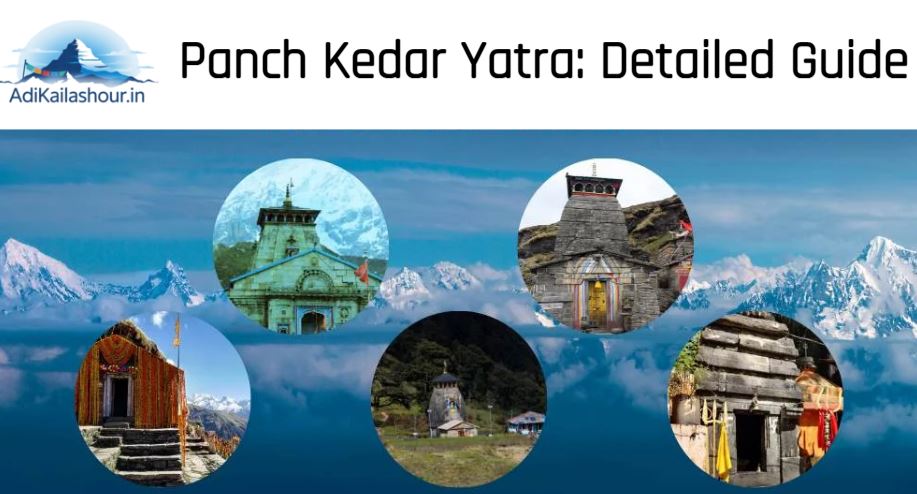Panch Kedar Yatra is a revered Hindu pilgrimage circuit comprising five sacred temples dedicated to Lord Shiva, scattered across the awe-inspiring Garhwal Himalayas in Uttarakhand, India. This pilgrimage intertwines spirituality, mythology, culture, and trekking adventure, attracting thousands of devotees and trekkers annually who seek the blessings of Shiva while experiencing the untouched Himalayan wilderness.
Historical and Mythological Significance
According to Hindu mythology, after the devastating battle of Kurukshetra in the Mahabharata, the Pandavas sought Lord Shiva’s forgiveness for the bloodshed they caused. Shiva, unwilling to forgive them easily, disguised himself as a bull and vanished into the hills of Garhwal. Bhima, one of the Pandavas, recognized the bull and tried to hold on to it, but Shiva disappeared into the ground, leaving behind his five body parts at five different locations. These spots became the sacred Panch Kedar temples — Kedarnath (hump), Tungnath (arms), Rudranath (face), Madhyamaheshwar (navel), and Kalpeshwar (hair).
The Pandavas then constructed temples where these parts appeared, making Panch Kedar a symbol of Lord Shiva’s omnipresence and a testament to devotion and penance.
The Five Temples of the Panch Kedar Yatra
- Kedarnath Temple: The most famous Jyotirlinga, located at 3,583 meters near the Mandakini River. It is open from April to November and signifies the bull’s hump.
- Tungnath Temple: The highest Shiva temple in the world at 3,680 meters, represents the bull’s arms. It embodies rugged mountain beauty and tranquil spiritual energy.
- Rudranath Temple: Situated at 3,559 meters, surrounded by forests and alpine meadows, marking Shiva’s face.
- Madhyamaheshwar Temple: Located at 3,490 meters, known for its deep valley setting and connection with the navel of Shiva.
- Kalpeshwar Temple: The lowest in the group at 2,200 meters, accessible year-round and representing Shiva’s hair. It is in a remote cave near Urgam village.
Pilgrimage Route and Trekking Itinerary
The journey typically starts at Rishikesh and covers approximately 95 kilometers on foot and road over 10 to 12 days. The traditional sequence of temples visited is Kedarnath, Madhyamaheshwar, Tungnath, Rudranath, and finally Kalpeshwar.
Key Highlights of the Itinerary
- Rishikesh to Gaurikund: Drive to a base camp for the Kedarnath trek.
- Kedarnath Trek: A demanding 16 km trek to the Kedarnath Temple.
- Travel to Guptkashi and Ukhimath: From where road and trails lead to Madhyamaheshwar and Tungnath.
- Madhyamaheshwar to Tungnath and Chopta: 3 to 6 km treks showcasing panoramic beauty.
- Rudranath Trek: A moderate to challenging trek through dense forests and high meadows.
- Kalpeshwar Trek: A short, accessible trek into a tranquil cave temple.
Best Time to Undertake the Panch Kedar Yatra
May to June and September to November offer optimal weather conditions with clear skies and manageable temperatures. Monsoon months bring heavy rains and slippery trails, while winter months lead to snow-blocked paths, particularly for Kedarnath and Tungnath.
Preparation Tips
- Maintain physical fitness to handle trekking over varied terrain and altitudes.
- Gradual acclimatization is vital to prevent altitude sickness.
- Use appropriate trekking gear including warm clothing, sturdy shoes, and rain protection.
- Hire local guides and porters to enhance safety and cultural understanding.
- Book transport and accommodations in advance, especially during peak seasons.
Spiritual and Cultural Essence
Panch Kedar Yatra is not only a physical journey but a deep spiritual quest. Devotees experience vibrant Himalayan tribal cultures and age-old rituals that highlight the region’s rich heritage. The temples serve as living monuments to divinity, mythology, and perseverance.
Conclusion
The Panch Kedar Yatra offers a unique amalgamation of Himalayan adventure, religious fervor, and cultural richness. Walking the path of the Pandavas, witnessing divine panoramas, and visiting ancient temples, pilgrims and trekkers alike find inspiration, solace, and a connection to the eternal Shiva. This sacred journey through the Panch Kedar temples remains one of India’s most profound pilgrimage expeditions.

